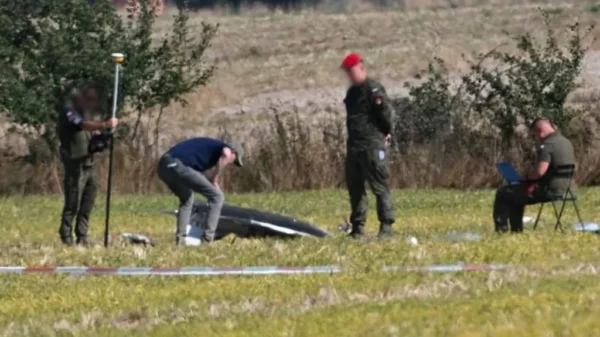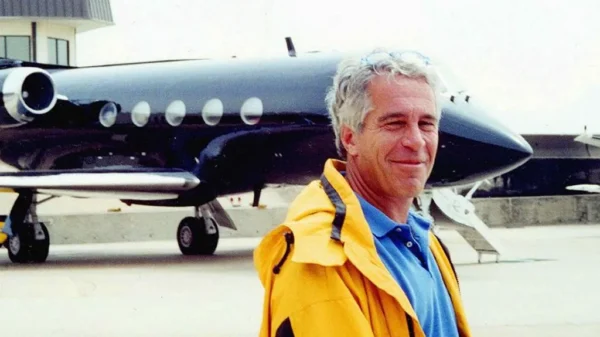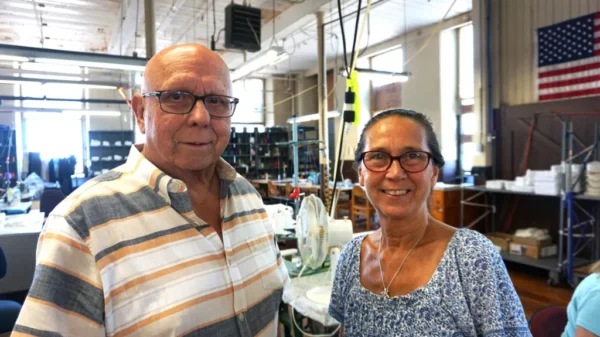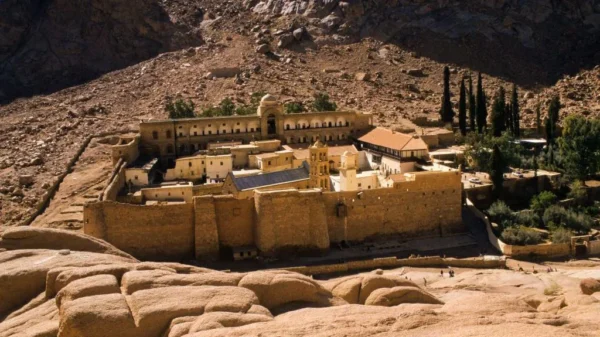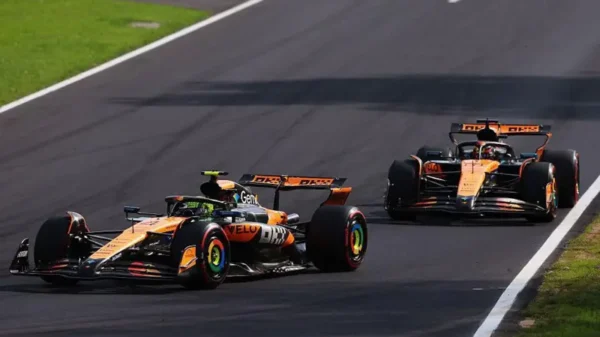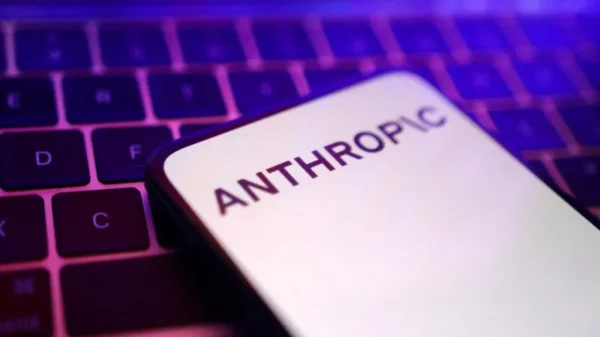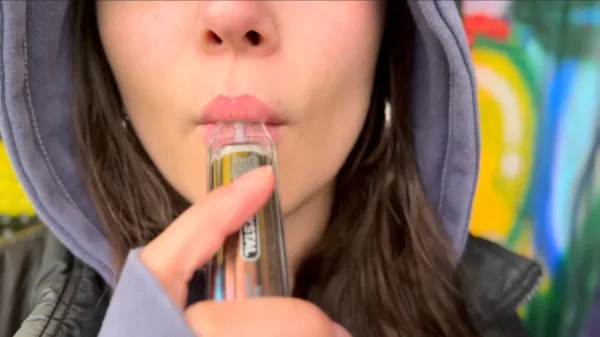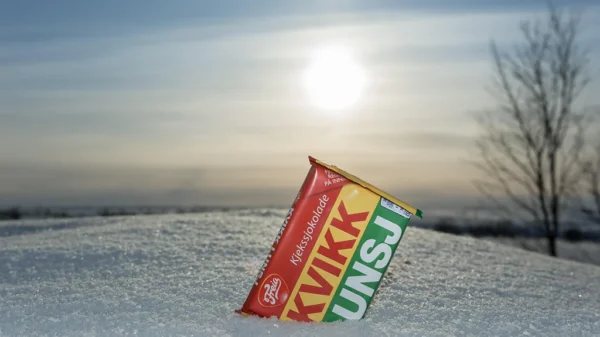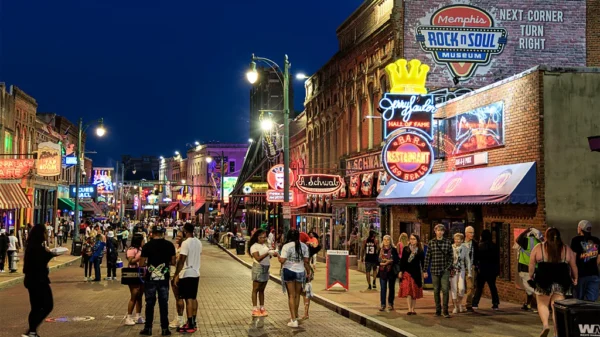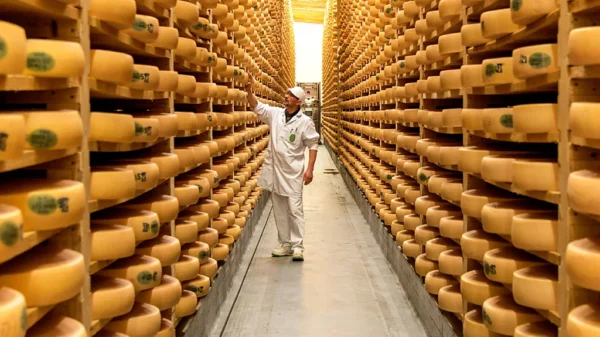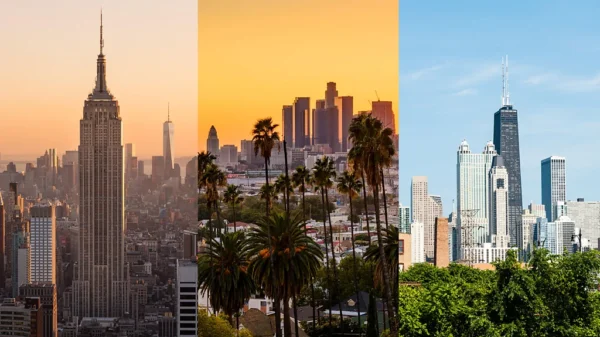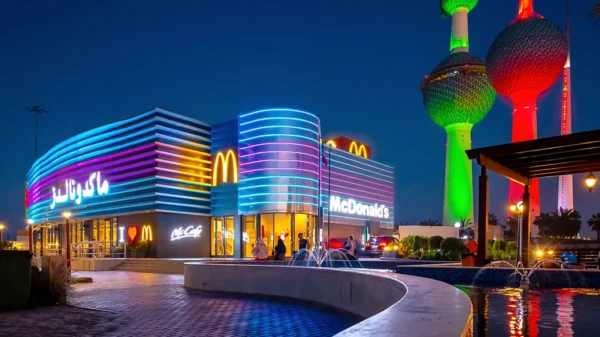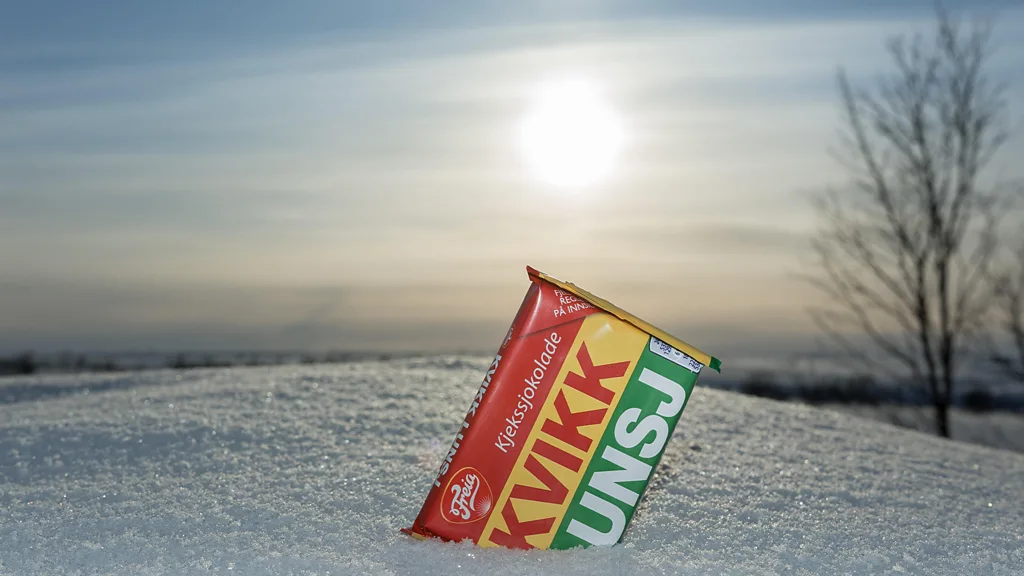Known as ‘the trip chocolate’, Kvikk Lunsj has fuelled outdoor adventures for generations. So, what makes this chocolate so controversial?
It’s started to drizzle across the marsh, but we’re prepared – as we Norwegians say, “there’s no bad weather, only bad clothing”. We’ve just happened upon a patch of cloudberries, an elusive Arctic delicacy that thrives in wet bogs, noting their location so we can come back to pick them when they’ve ripened to orange. And as we huddle under the soft needles of a spruce tree, my friend digs into her pocket and pulls out something no Norwegian would ever leave behind on a trip into nature: a Kvikk Lunsj.
Kvikk Lunsj is a four-fingered chocolate bar that’s beloved across Norway and synonymous with outdoor exploration. The snack’s slogan is “tursjokoladen” (“the trip chocolate”), and ads for the wafers often depict hikers spinning a compass, skiers summiting frosty peaks and people drinking water from rushing rivers. Today, roughly 60 million Kvikk Lunsj bars are produced each year – about 11 for every Norwegian – and whether you’re skipping across mountain brooks or striking out in a kayak, no journey into the Norwegian wilderness is complete without one. That’s because Kvikk Lunsj isn’t just a sweet treat; it’s part of our national heritage.
Kvikk Lunsj was invented in 1937, but according to its creator Johan Throne Holst, the story actually starts 45 years earlier with a failed hike. Throne Holst, then a young businessman, wanted to show Norway’s stunning landscapes to his German business associate, but they lost their way in the woods outside Oslo. As the pair trudged on, directionless and increasingly hungry, the German complained that their journey would have been salvaged had they packed some chocolate.
Perhaps inspired by his colleague’s remarks, two years later Throne Holst bought Freia, a tiny chocolate factory in Oslo, and during the next several decades, grew it into one of Norway’s biggest brands. In the midst of Freia’s rise, Norwegian explorer Roald Amundsen became the first person to reach the South Pole in 1911, and after revealing that he had packed chocolate to help fuel his journey, many Norwegians began seeking out chocolate to fuel their outdoor pursuits too. Throne Holst saw an opportunity.
Recalling his German colleague’s words in the woods, Throne Holst set out to create the perfect crunchy, chocolatey companion for an outdoor excursion – the kind that both the German and Amundsen would have approved of. But when Kvikk Lunsj first launched, it was a flop.
“The first version was made with dark chocolate, which was not a hit,” says Sandra Garcia Gabrielsen, Kvikk Lunsj brand manager at Mondelēz Europe Services, which now owns Freia. “It was changed to milk chocolate [almost immediately], which was more appealing”.
Ever since, the Kvikk Lunsj experience has started with tearing open a red, green and yellow packet to reveal four brown fingers embossed with tiny storks. You then break off a finger of the milk chocolate-coated wafer with a satisfying snap and bite into the surprisingly light and airy snack, which tastes creamier and less sharply sweet than other international brands – almost like a little meal.
In the 88 years since its launch, these energy-packed “quick lunches” have been marketed in much the same way as trail mix or energy bars might be in other nations. “There’s no better livener on your trip than a bar or two,” early ads declared, noting that calorie-wise, each pack contained “the equivalent of one egg and two slices of bread with butter”.
“From day one, it’s been ‘tursjokoladen’,” says Garcia Gabrielsen. In Norwegian, “tur” literally means “trip” – but not just any trip. Unlike a hike, trek or journey, a “tur” is essentially about moving slowly and mindfully through the outdoors. “There’s something about a ‘tur’ for us Norwegians that’s part of us,” says Garcia Gabrielsen. “So, it’s very special, being the stewards of this.”
Mention the name Kvikk Lunsj to most any Norwegian and they’ll instantly be transported back to a different time and place. “For me, it’s about the mountains at Easter,” says Magnus Helgerud, a historian and the author of the book Attached to the Cabin: Tracing Norwegian Happiness. “In my mind I’m maybe 10 years old, and I’m sitting in a south-facing snowy slope where we’ve built a fire, and we’re roasting hot dogs and eating oranges and Kvikk Lunsj… [Eating] Kvikk Lunsj is one of many rituals tied to friluftsliv“, says Helgerud, citing the Scandinavian term for “open air living”, which loosely refers to everything from lunchtime forest runs to skiing, biking or swimming in fjords.
As Helgerud explains, nature used to be a workplace throughout Norway, but around the time of Amundsen’s famous expedition, people began to have more time for leisure and “chocolate and friluftsliv became folksy”. In the 1910s and ’20s, industrial innovations, the introduction of the eight-hour workday with two weeks’ paid holiday and encouragement by unions to spend your free time in the fresh air, all incentivised Norwegians to head outside and go “from hard work to sunshine and strength”.
When the first ad campaign (titled “Health and strength”) for Kvikk Lunsj came in the late 1930s, it showed fresh-faced men and women in newly fashionable anoraks (whose pockets Kvikk Lunsj was specifically designed to fit) enjoying the snack after kayaking and skiing.
Following the end of Germany’s five-year occupation of Norway in 1945, Norwegians were eager to embrace their freedom and reclaim their place in Nordic nature. Around this time, “Kvikk Lunsj really hit a zeitgeist,” says Eirik Mikalsen, advisor at the Oslo-based ad agency Morgenstern. As post-war rationing ended, Kvikk Lunsj was soon relaunched and it soon became as quintessentially “Norwegian” as friluftsliv and Nordic nature itself.
“Kvikk Lunsj successfully tied itself to something that a lot of Norwegians felt was universally true,” says Mikalsen. After the horrors of war, people were free to enjoy their mountains and fjords again, and as soaring car sales spurred a boom in rural cabin-building in the 1960s, a new generation of Norwegians set out into the wilderness with Kvikk Lunsj packed into their pockets.
According to Helgerud, half of all Norwegians have access to a cabin today, and these chocolatey little meals are as much a part of the nation’s outdoor lifestyle as skis and hot dogs roasted over impromptu fires. “I grew up in the north, in the mountains. As kids, it was imprinted into us that you bring oranges and Kvikk Lunsj in your rucksack, as markers of things our parents thought were important. [They told us] ‘this is what you bring into the mountains, these are the things that make you who you are,’” says Mikalsen. “It’s such a strong carrier of our identity.”
But despite its strong Nordic roots, Kvikk Lunsj has long been shadowed by a controversy. For much of its nearly nine-decade history, this notably Norwegian treat has been accused of being a KitKat knockoff. The chocolate-covered four-fingered wafers are nearly identical in appearance to the famed British treat. In fact, it’s widely believed that Throne Holst came up with the concept for Kvikk Lunsj after discovering KitKat bars in England following their release in 1935, and when asked whether the Norwegian snack may have been inspired by its English counterpart, Garcia Gabrielsen says “that is not something we can confirm or deny”.
Adding to the dispute, this iconic Norwegian treat is now owned by Mondelēz, an American multinational company. When Freia was initially sold to its predecessor Kraft Foods in 1993, people were up in arms: “That generated major headlines, and concerns about whether we’d lose the Freia name as well as [potential changes to] the recipes,” says Mikalsen.
The Mondelēz connection also proved problematic when Freia was briefly included in a consumer boycott in 2023 when its parent company continued trading in Russia after its invasion of Ukraine. Norway, which shares a border with Russia in the north, has felt tensions with its neighbour rising in recent years as it has committed to providing aid to Ukraine for “as long as it takes” – a pledge that has broad support in the country.
And as for the KitKat claims? Until recently, KitKat and Kvikk Lunsj have eyed each other up from a respectful distance. But following news this year that KitKat is entering the Norwegian market, there were concerns that this peaceful coexistence could be coming to an end. But Garcia Gabrielsen at Mondelēz confirms, Norwegians need not worry.
Following a decade of court proceedings in which KitKat’s parent company, Nestlé, failed to trademark its signature four-fingered wafer shape throughout Europe, Garcia Gabrielsen explains that “KitKat can’t sell a four-finger bar in Norway, just as we can’t sell one abroad”. Instead, KitKat is entering Norway with its differently shaped “Chunky” bar, and Kvikk Lunsj will still have exclusive rights to sell a four-fingered treat in Norway – so long as it stays there.
But which one tastes best – KitKat or Kvikk Lunsj? During the legal proceedings, the latter won out when The Guardian compared the two in a taste test. This Norwegian is prone to agree.
And as the autumn rain washed over the marsh, I was happy to see a familiar red, green, and yellow wrapper emerge from my friend’s pocket as we huddled under the spruce tree. After all, as Mikalsen says: “Kvikk Lunsj is part of our childhood memories. It’s part of what ties us together.”
That’s a flavour that’s hard to beat.
Sourse: BBC






